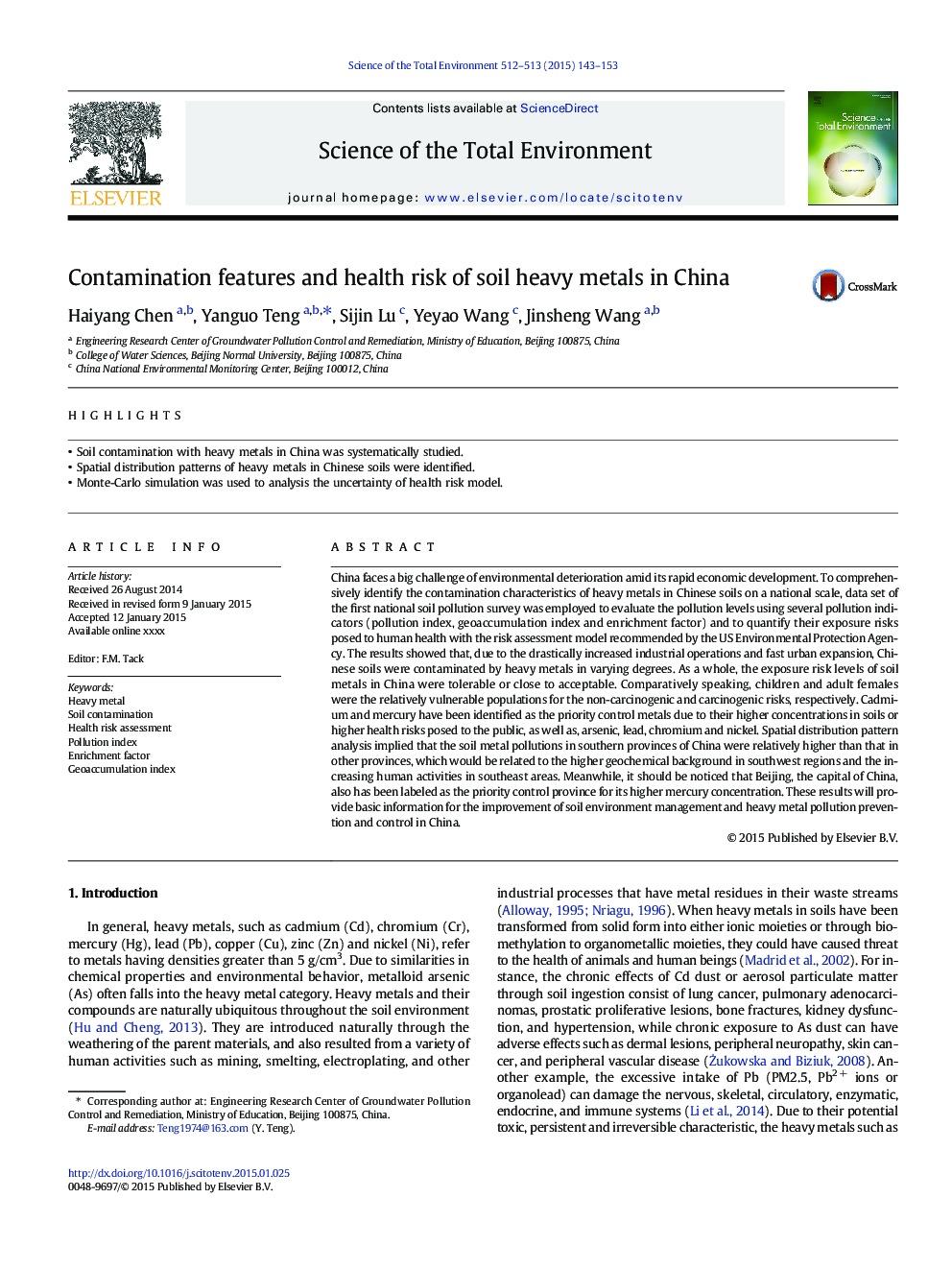| Article ID | Journal | Published Year | Pages | File Type |
|---|---|---|---|---|
| 6327160 | Science of The Total Environment | 2015 | 11 Pages |
Abstract
China faces a big challenge of environmental deterioration amid its rapid economic development. To comprehensively identify the contamination characteristics of heavy metals in Chinese soils on a national scale, data set of the first national soil pollution survey was employed to evaluate the pollution levels using several pollution indicators (pollution index, geoaccumulation index and enrichment factor) and to quantify their exposure risks posed to human health with the risk assessment model recommended by the US Environmental Protection Agency. The results showed that, due to the drastically increased industrial operations and fast urban expansion, Chinese soils were contaminated by heavy metals in varying degrees. As a whole, the exposure risk levels of soil metals in China were tolerable or close to acceptable. Comparatively speaking, children and adult females were the relatively vulnerable populations for the non-carcinogenic and carcinogenic risks, respectively. Cadmium and mercury have been identified as the priority control metals due to their higher concentrations in soils or higher health risks posed to the public, as well as, arsenic, lead, chromium and nickel. Spatial distribution pattern analysis implied that the soil metal pollutions in southern provinces of China were relatively higher than that in other provinces, which would be related to the higher geochemical background in southwest regions and the increasing human activities in southeast areas. Meanwhile, it should be noticed that Beijing, the capital of China, also has been labeled as the priority control province for its higher mercury concentration. These results will provide basic information for the improvement of soil environment management and heavy metal pollution prevention and control in China.
Keywords
Related Topics
Life Sciences
Environmental Science
Environmental Chemistry
Authors
Haiyang Chen, Yanguo Teng, Sijin Lu, Yeyao Wang, Jinsheng Wang,
